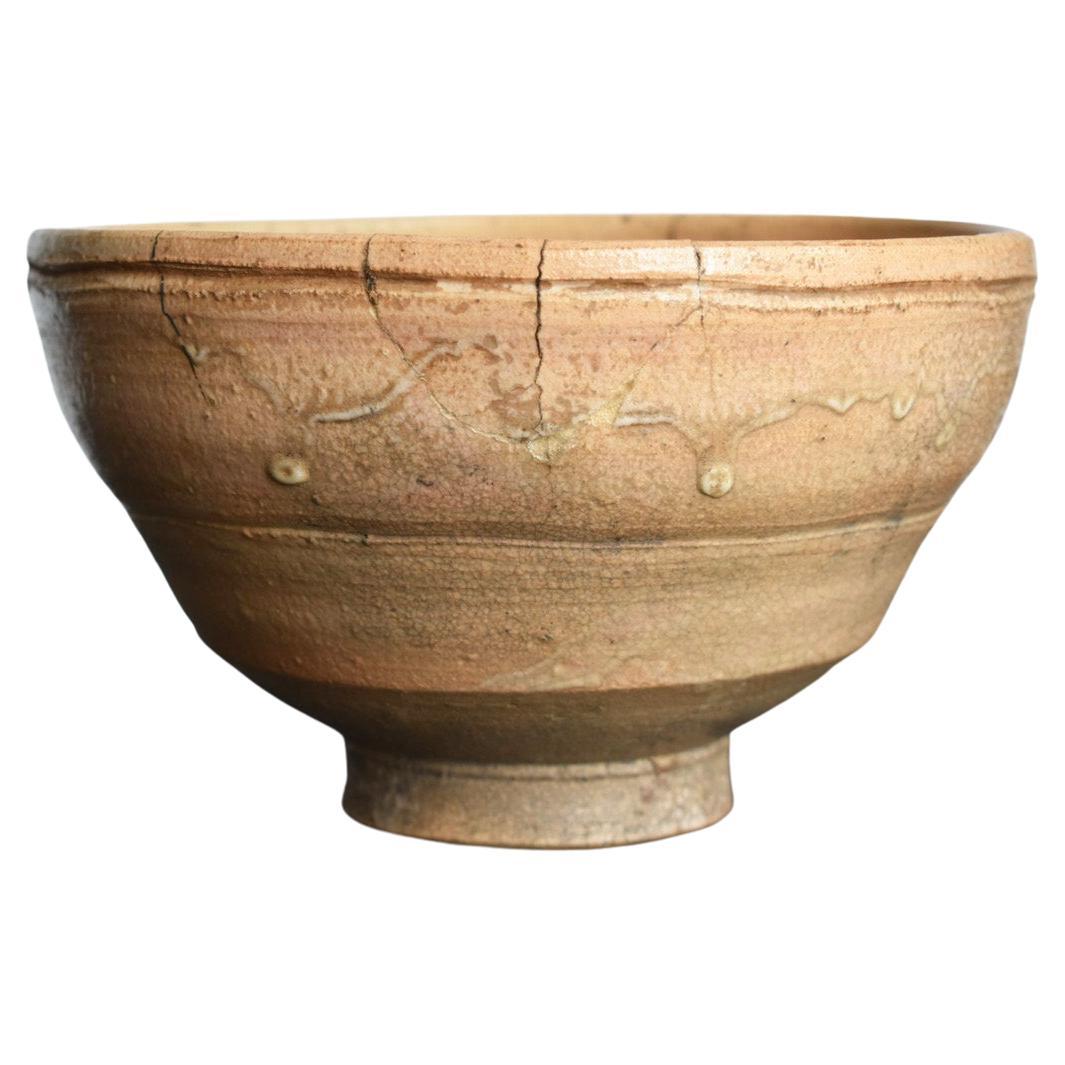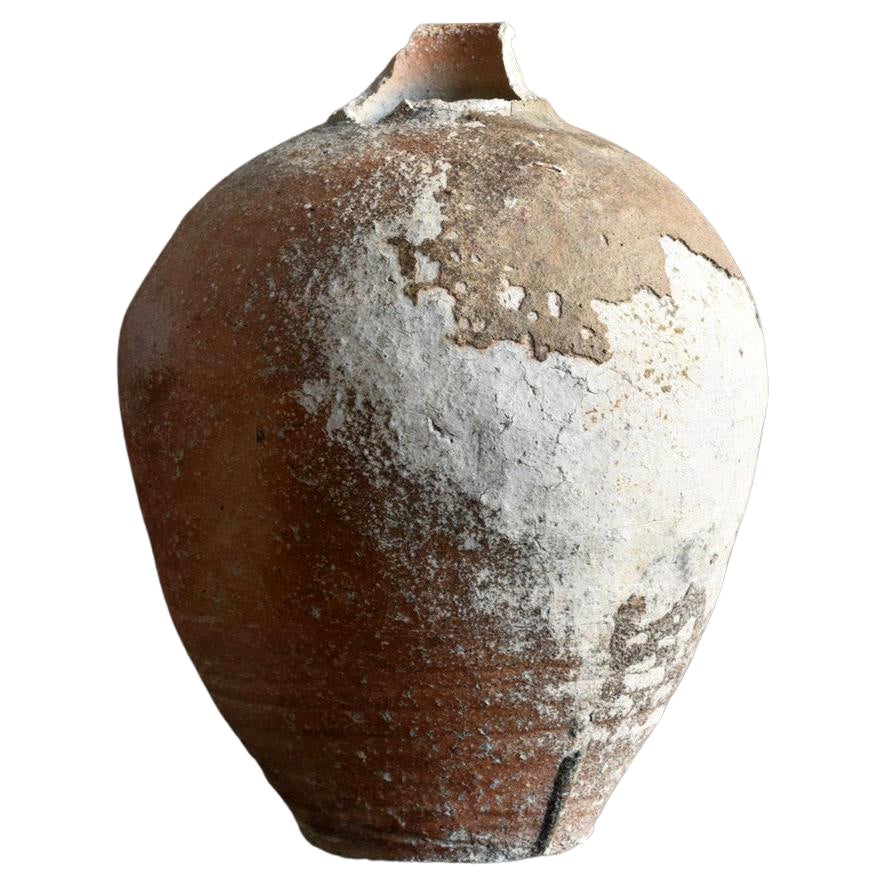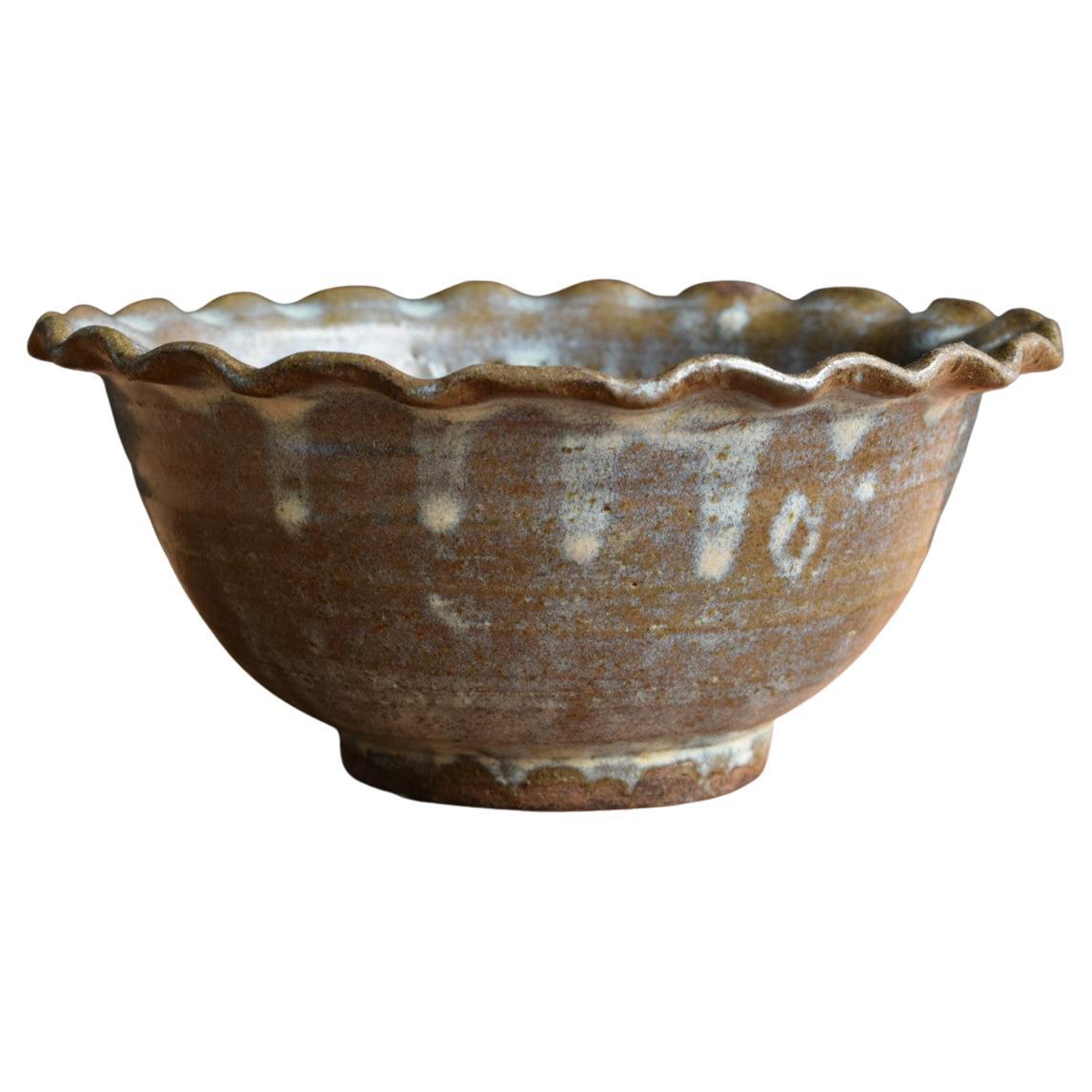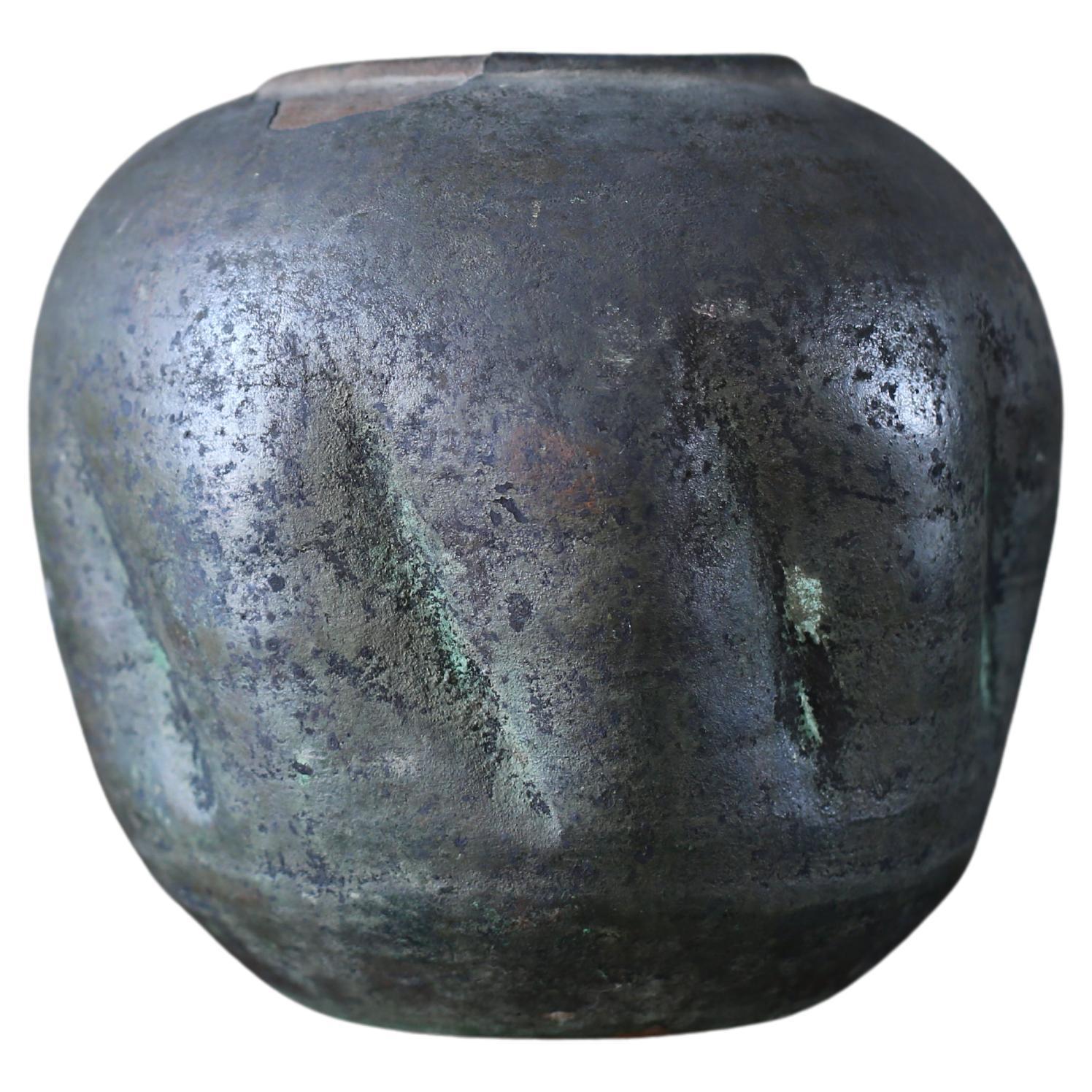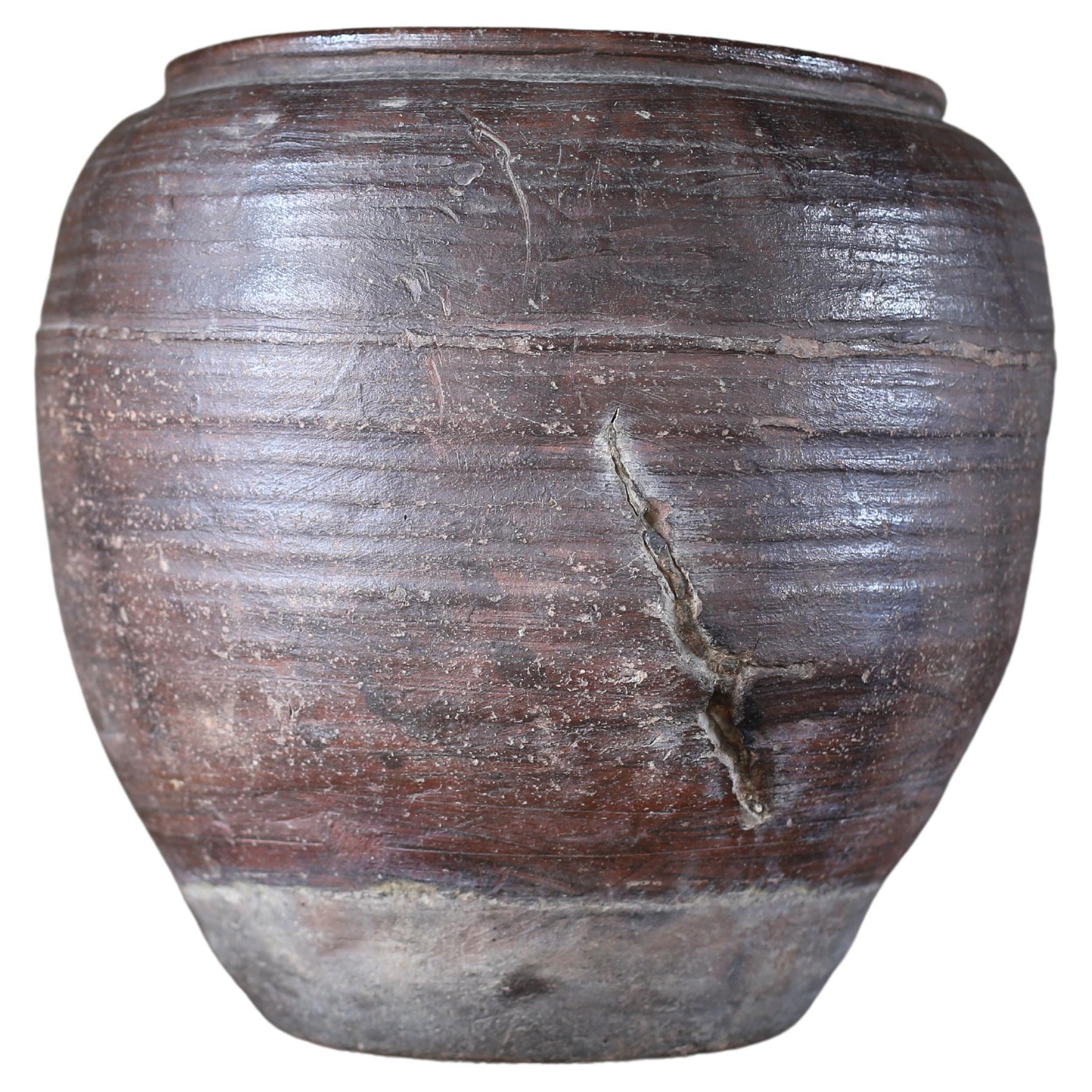Items Similar to Japanese Antique Pottery Bowl/'Tempo Oribe' Seto Ware/1830-1844/Wabisabi Bowl
Want more images or videos?
Request additional images or videos from the seller
1 of 21
Japanese Antique Pottery Bowl/'Tempo Oribe' Seto Ware/1830-1844/Wabisabi Bowl
About the Item
I would like to introduce a simple but very beautiful tea bowl.
This is a type of pottery called "Tempo Oribe".
"Tempo" is the name of the era in the Edo period, and Oribe is the name of the pottery.
It refers to pottery that was fired between 1830 and 1844 in the late Edo period.
This Oribe is a pottery made in Gifu Prefecture, and the one made by imitating the Oribe ware is "Tempo Oribe".
This is a type of Seto ware made in Seto City, Aichi Prefecture.
(Seto kilns are marked with red circles on the map.)
"Three cranes" and "hidden raincoat" are drawn on this pottery.
Both indicate auspiciousness.
Crane means longevity.
The origin of the kakuremino is ``a raincoat that can be worn to hide one's appearance.
This means protecting yourself from danger.
A little bit of red and green glaze is dripped on the edge of the pottery vessel to make a pattern.
The reverse side has a very beautiful finish with a ring line drawn.
Luckily there are no scratches and the condition is very good.
A wooden pedestal is included to display the vessel.
A dedicated wooden storage box is also included.
"Tempo Oribe" is written on this wooden box.
It is a rare item.
Highly recommended.
Also, I want many people to know the goodness of antiques, so I set the price reasonably.
Weight: 349g
If you want something special, we encourage you to purchase our selected items.
We mainly sell carefully selected old Japanese items.
I've seen tens of thousands of items so far.
Based on that experience, only selected items are posted here.
We are able to do this because of our long experience.
There may be items on the 1stdibs site that look and feel the same, but our selection is unique.
- Dimensions:Height: 2.13 in (5.4 cm)Diameter: 6.3 in (16 cm)
- Style:Edo (Of the Period)
- Materials and Techniques:
- Place of Origin:
- Period:
- Date of Manufacture:1830-1844
- Condition:
- Seller Location:Sammu-shi, JP
- Reference Number:1stDibs: LU5487231968022
About the Seller
5.0
Platinum Seller
These expertly vetted sellers are 1stDibs' most experienced sellers and are rated highest by our customers.
Established in 2015
1stDibs seller since 2020
1,117 sales on 1stDibs
Typical response time: 4 hours
- ShippingRetrieving quote...Ships From: senzoku, Japan
- Return PolicyA return for this item may be initiated within 7 days of delivery.
More From This SellerView All
- Japanese antique pottery bowl/[Banko ware] Mie prefecture/1850-1912Located in Sammu-shi, ChibaBanko-yaki is a type of pottery that began in the northern part of Mie Prefecture in the middle of the Edo period. (The places marked with red circles on the map are the kilns of Banko ware...Category
Antique Late 19th Century Japanese Edo Pottery
MaterialsPottery
- Japanese Antique Earthenware Tea Bowl/Edo Period/1700-1800/'Hagi Ware'Located in Sammu-shi, ChibaThis is Hagi ware made in the middle of the Edo period. Hagi ware is a type of pottery that began in Hagi City, Yamaguchi Prefecture in the early Edo period...Category
Antique 18th Century Japanese Edo Pottery
MaterialsPottery
- Japanese Antique Pottery Jar/1500s/"Shigaraki Ware"/Wabisabi VaseLocated in Sammu-shi, ChibaThis is a Japanese pottery called "Shigaraki ware". Shigaraki is a historical kiln located in Shiga Prefecture, Japan. (Shigaraki Kiln is marked with a ...Category
Antique 15th Century and Earlier Japanese Other Vases
MaterialsPottery
- Antique pottery bowl from Kumamoto, Japan / Shodai ware / Edo / 18-19 thcenturyLocated in Sammu-shi, ChibaWe have a unique Japanese aesthetic sense. And only we can introduce unique items through our purchasing channels in Japan and the experience we have gained so far, in such a way that no one else can imitate. It is speculated that this pottery was fired in the Shodai kiln in Kumamoto Prefecture during the Edo period, around the 18th century to the first half of the 19th century. It is characterized by the use of iron-rich clay and the appearance of a white glaze that looks like falling snow. As a feature, using clay with a lot of iron, It is characterized by a white glaze that looks like snow. This vessel is made with two types of glaze. One is straw ash glaze and the other is rice husk ash glaze. This rice husk ash glaze changes to a white glaze. This pot is very beautiful with a petal-like rim. However, there is one spot where the crack has been repaired. The part marked with a red arrow has been broken once, but it seems to have been glued later. Therefore, it will not leak even if you put water in it. It's not very noticeable so I wouldn't worry about it. This Shodai ware was made in Kumamoto Prefecture and was used there, so there are not many items in Japan. It is a rare item. Also, a wooden box is included, but it says "Karatsu ware...Category
Antique Mid-18th Century Japanese Edo Serving Bowls
MaterialsPottery
- Antique Rare Pottery Coated with Copper Plate Used in Japan/Tsubo WabisabiLocated in Sammu-shi, ChibaIt is used in Japan. It seems to be in the Edo period (1700s-1800s). But details are unknown. The unique distorted shape is beautiful. The color and balance of the glaze are al...Category
Antique Early 19th Century Japanese Edo Vases
MaterialsPottery
- Japanese Antique Pottery with Beautiful Ripped in the Edo Period/Tsubo WabisabiLocated in Sammu-shi, ChibaIt is an old jar baked in Japan. It seems to be in the Edo period (1700s-1800s). The unique distorted shape is beautiful. The color and balance of the gla...Category
Antique Early 19th Century Japanese Edo Vases
MaterialsPottery
You May Also Like
- 17th Century Islamic Iznik Ceramic Pottery Kendi JugLocated in Vero Beach, FL17th century Islamic Iznik ceramic pottery Kendi jug This rare and precious antique Kendi jug is probably from the 17th century and it is excep...Category
Antique 17th Century Turkish Islamic Pottery
MaterialsCeramic
- 1970s Asian Chinese Export Fierce Facing Drip Glaze Pottery Foo Dogs, PairLocated in Kennesaw, GAThese are a personal favorite! This is a killer pair of 1970s large scale Chinese Export style foo dogs. I love the coloration with the brown and gold drip g...Category
Late 20th Century Chinese Chinese Export Pottery
MaterialsCeramic, Pottery
- Japanese Ao-Oribe Glazed Stoneware Dish, Early Edo Period, 17th Century, JapanLocated in Austin, TXA fine and rare Japanese ao-oribe glazed minoyaki stoneware dish, late Momoyama or early Edo period, 17th century, Japan. The circular dish of wheel thrown stoneware, glazed in the ...Category
Antique 17th Century Japanese Edo Ceramics
MaterialsStoneware
- Japanese Antique Sliding Door, Wabisabi Door, Object Mingei Art PanelLocated in Katori-Shi, 12This is a very old Japanese sliding door. It is a simple design that conveys the charm of the material. You can feel the world of wabi and sab...Category
Early 20th Century Meiji Doors and Gates
MaterialsWood
- Vintage Japanese Oribe Ware Tea Bowl, Chawan, by Matsumoto TetsuzanLocated in Austin, TXA charming vintage Japanese oribe glazed chawan by Matsumoto Tetsuzan (b. 1955), Seto, Japan. The tea bowl, called a chawan, wonderfully potted with...Category
Early 2000s Japanese Edo Ceramics
MaterialsStoneware
- Japanese Mino Ware Oribe Type Chawan Tea BowlLocated in Atlanta, GAA Japanese Kutsu-gata (clog-shaped) chawan (tea bowl) circa 19th century possibly older. The stoneware bowl potted from buff clay has a slight irregular shape and an unusual depth for a tea bowl. Of Mino ware...Category
Antique 19th Century Japanese Meiji Ceramics
MaterialsCeramic
Recently Viewed
View AllMore Ways To Browse
Pricing Antique Glass
Antique Glass Prices
Silver Hidden
Antique Glass Very Old
Silver Box Japan
Japanese Silver Box
Antique Glass Sides And Glasses Storage
Antique Silver Bit
Selling Antique Glass
Green Glass Ring
Selling Antique Silver
Antique Japanese Serveware
Antique Pottery Names
Antique Pottery Prices
Antique Japanese Tea
Pedestal Silver Bowl
Silver Pedestal Bowl
Wooden Silver Box
![Japanese antique pottery bowl/[Banko ware] Mie prefecture/1850-1912](https://a.1stdibscdn.com/archivesE/upload/1121189/f_319674221672470538196/31967422_datamatics.jpg)
